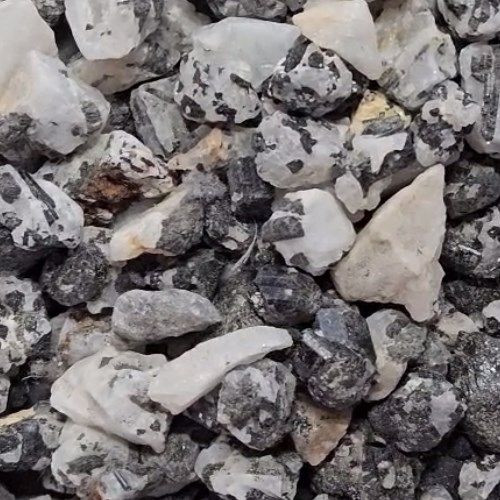Product Description
Tourmaline Multi-Color Rough Stone .25"-.5"
Mineral Information:
Tourmaline is a group of minerals that encompasses several different gemstone varieties. It is a complex mineral composed of boron, aluminum, and a variety of other elements, which contribute to its wide range of colors and properties. Tourmaline is known for its beautiful and diverse color palette, making it a popular gemstone in the jewelry industry.
There are many different types of tourmaline, each with its own unique characteristics and color variations.
Tourmaline is treasured for more than just its beauty. It is also believed to have various metaphysical properties and healing energies. Different varieties of tourmaline are associated with different chakras and have specific metaphysical meanings and uses.
Overall, tourmaline is a versatile gemstone that offers a wide range of colors and metaphysical properties, making it a popular choice for both jewelry enthusiasts and those interested in the spiritual and healing aspects of gemstones.
Metaphysical Meaning:
Some of the well-known varieties include:
-
Black Tourmaline (Schorl): This is the most common type of tourmaline and is usually black or dark in color. It is known for its strong protective properties and is often used in energy work and spiritual practices.
-
Watermelon Tourmaline: This variety displays a distinct color zoning, with a pink or red core surrounded by a green outer layer, resembling a watermelon. It is valued for its unique and vibrant appearance.
-
Rubellite: Also known as pink tourmaline, rubellite is prized for its intense and vivid pink color. It is associated with matters of the heart, love, and emotional healing.
-
Green Tourmaline: This variety ranges from pale green to deep emerald green. It is associated with abundance, growth, and healing on both physical and emotional levels.
-
Blue Tourmaline (Indicolite): Blue tourmaline comes in various shades of blue, ranging from light sky blue to deep blue-green. It is associated with communication, intuition, and the throat chakra.
-
Paraiba Tourmaline: Paraiba tourmaline is highly sought after for its intense and neon blue or green-blue color. It is known for its rarity and vibrant glow.
Mineral Care:
Tourmaline, in general, is considered to have a good level of durability and is suitable for everyday wear. However, its fragility can vary depending on factors such as the specific variety of tourmaline, the quality of the crystal, and any internal flaws or inclusions present.
Tourmaline has a hardness of 7 to 7.5 on the Mohs scale, which means it is relatively resistant to scratching and abrasion. This hardness level is comparable to materials like quartz and feldspar. However, it is important to note that tourmaline can still be scratched by harder substances such as corundum (e.g., sapphire and ruby) and diamond.
The fragility of tourmaline primarily comes from its crystal structure and any internal flaws or inclusions it may possess. Tourmaline crystals can have natural fractures, cleavage planes, or inclusions that weaken the stone and make it more susceptible to breakage if subjected to impact or excessive force.
In addition, some varieties of tourmaline may be more prone to certain types of damage. For example, green tourmaline is sometimes heat-treated to enhance its color, and this treatment can make it more sensitive to sudden temperature changes.
To ensure the longevity of tourmaline jewelry or specimens, it is recommended to handle them with care and avoid exposing them to situations where they may be subject to impact or extreme temperature changes. It is also advisable to store tourmaline separately from other gemstones or jewelry to prevent scratching.
While tourmaline is generally considered durable, it is always best to treat it with gentle care to minimize the risk of damage and maintain its beauty over time.
Disclaimer:
No information here is intended to diagnose, treat or cure ailments or afflictions of any kind. One should always consult a medical professional if a serious issue presents itself.







